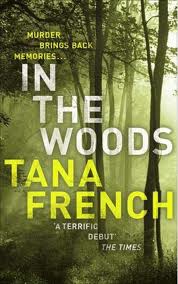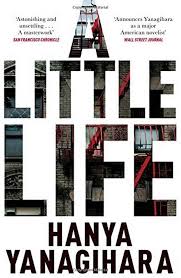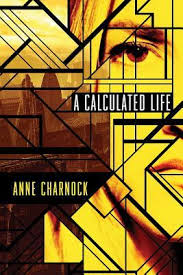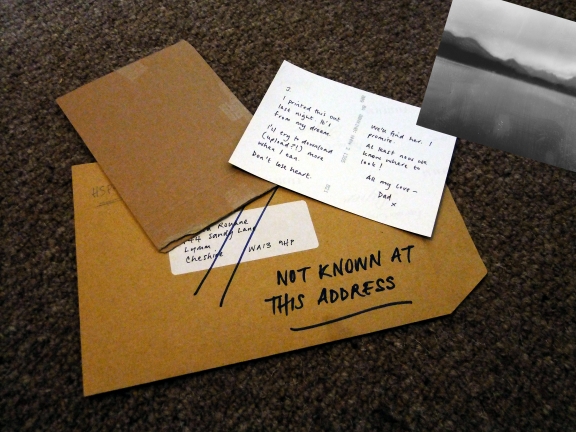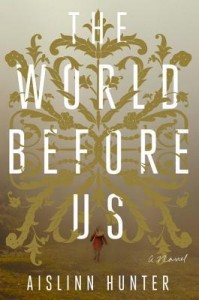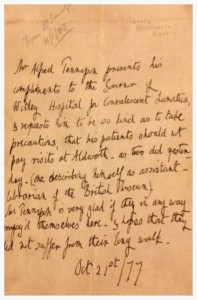I spent part of this bank holiday weekend at London’s Frightfest. I know I swore I’d not go back, but the company of friends, the wonderful atmosphere of the Fest itself, and the hope that maybe – just maybe – I’d see something astounding tempted me to give the thing another go. I had a great time just being in town, and loved the experience of just being at FF as I always do. The films, though. I know it’s hardly fair of me to comment as time and expense (and, this year, a train strike) meant I only got to see a small percentage of the complete line-up, but oh dear. Aside from a highly commendable and hugely entertaining Mad Max homage called Turbo Kid (chopper bikes and old comics instead of war machines – an appealing aesthetic, I thought, as well as a lively, funny, knowing script that played out as if the writer actually gave a damn) none of the films I saw possessed so much as a scrap of originality or merit. Worse, much of what was on offer seemed to have a retrograde vibe in terms of its subject matter – and not in a good way.
Every so often we get bursts of discussion about conservatism within the horror genre: namely, whether horror is an inherently conservative form of storytelling – over-dependent on tired tropes, antediluvian social attitudes and plot-it-by-numbers stereotypes. Not enough discussion, evidently. Why is it that whenever I start to feel optimistic about a new era of horror cinema, along comes a film like Levan Bakhia’s Landmine Goes Click and pulls that particular rug right out from under my feet. And again, not in a good way. It’s a shame Bakhia (who was present for the screening and – of course! – seemed like a really nice guy) wasn’t doing a Q&A at the showing I went to because I did actually have a question I’d have been genuinely fascinated to hear the answer to:
“Mr Bakhia, don’t you think films in which the women characters exist solely to be humiliated, raped and finally killed – in which the women characters’ sole purpose within the plot is to provide fuel for an argument/feud/vendetta between characters of the male gender and where in fact there is no plot driver except that an adult woman happened to have consensual sex with another adult – don’t you think films like that are just a tiny bit eighties???”
I think what Bakhia might (and I say that very tentatively because he shot so wide of the target) have been going for was a kind of Euro/US spin on Park Chan-wook’s mighty Vengeance trilogy. Personally, I would count such a misguided homage as an insult to Park. Landmine Goes Click is pointless, tasteless, boring and one of the very worst films I’ve seen recently. Right from the start, the omens weren’t good. In the few words he did address to the audience prior to the screening, Bakhia suggested that the story idea had originally arisen out of a brainstorming session. What’s the betting that the participants in said session were all lads..?
More worrying still, the movie currently has a rating of 7.6 on iMDb.
What actually went through the writer/director’s head? What emotions did he want to arouse? Because aside from the movie’s inherent derivativeness, nothing about the film is remotely shocking. Does Bakhia think horror films are just for men? Does he think men don’t care about story, so long as they get to see one angry dude call his fiancee a whore and set her up to be raped?
I’m asking, because I’m genuinely curious.
I was mulling all this over (during the second, excruciatingly tedious half of yet another film in which demons/witches seemed rapaciously intent on robbing a teenage girl of her unborn baby) and asking myself for the umpteenth time: is it them, or me? Is it even possible to make a good, commercially viable horror film? Not namby-pamby arthouse horror (my favourite kind – sigh) but the full-on, genuine article with its roots stuck firmly in the genre and that anyone who regularly watches horror would be OK with naming as such?
If so, what is it about these films that lift them clear of the dross heap, and why aren’t there more of them?
It’s interesting to think about (more fun than watching Hellions, anyway, and to think the same guy directed Pontypool – what the actual fuck??) and in a pre-emptive strike I’m going to answer my own questions:
1) Yes, it’s possible.
2) A decent script.
3) Because way too many writers/directors think a promising idea is the same as an actual story.
I’m now going to illustrate my answers with some examples. It so happens that shortly before I went to FrightFest, I happened to see an article over at Movies Films and Flicks in which Mark Hofmeyer set out to canvas opinion on the top ten horror films of the 21st century – so far. He culled figures and ratings from many sources – you can see the full breakdown here and the whole article makes fascinating reading. Whilst I may not agree with all the placings (although Mark’s personal five aren’t a bad line-up, actually) I found it a fun game to play. I scribbled down my own list, which soon ballooned to twenty and I’m still fiddling around with it. Here (and I stress in no particular order) is where I am with it so far:
Kill List (Ben Wheatley). A returning soldier faces problems reintegrating himself with civilain society. A charismatic friend (read ‘bit of a dick’) offers to cut him in on a high-paying, er, contract he’s landed. After a long, slow build-up that has more in common with the cinema of Mike Leigh than anything you might expect to find in a generic horror film, things suddenly get very nasty very fast. This film is hard to watch but it is a stand-out.
Wake Wood (David Keating). Remembering the quiet and chilling elegance of this Wicker-Man-style movie (which received far less attention than it warranted) makes it all the more painful to learn that its director went on to make the derivative and valueless coven ‘chiller’ Cherry Tree as premiered at FrightFest this weekend.
Thirst (Park Chan-wook). A reimagining of Zola’s novel Therese Raquin – with added vampires! I was totally swept away by this when I saw it – but then it is Park Chan-wook, so you can’t go wrong really. Stunning and beautiful.
Stoker (Park Chan-wook). Park’s first English-language movie mixes familiar Hollywood horror tropes with Korean revenge drama and some of the most luscious cinematography ever to grace a screen. I’d watch this again in a heartbeat and you should, too.
Paranormal Activity (Oren Peli). The best thing about this one is that it has the courage of its convictions. Not a lot happens – but the tension generated is mighty AND it stands up to repeated viewings. I thought this was going to be shit when I went to see it – the death throes of the Blair Witch movement – but I was more than happy to be wrong. The sequels get more and more stupid (as sequels tend to do) but whilst they’re moderately entertaining, the original first movie is actually worthy of a place in the canon.
Sympathy for Lady Vengeance (Park Chan-wook). Park’s use of music and colour (especially the colour red) in this film is astounding. Whilst a lot of people cite Oldboy as the jewel in the Vengeance crown, I would have to cite Lady Vengeance, the third instalment in the trilogy, as my personal favourite.
The Mothman Prophecies (Mark Pellington). I’ve watched this about four times and I still love it. A quiet, slow, highly unusual ghost story about recovering from grief and predicting the future. Laura Linney, especially, shines. The final fifteen minutes provides a particularly glorious sequence, shot almost entirely without dialogue, which feels genuinely iconic.
The Last Exorcism (Daniel Stamm). Far and away the best of the spate of exorcism films that arrived seemingly out of nowhere between 2009-2012. The first half hour plays out like a real-life documentary about a boy-preacher growing up to become a professional exorcist. He’s mostly lost his faith but he still wants to help people. He’s called to a remote farm, where a young girl has been behaving strangely. The ending of this film is rather predictable, sadly, but there’s some great stuff along the way and several moments of genuine terror (all too rare in horror films these days).
Wolf Creek (Greg McLean). Four friends camping in the outback. Their van breaks down. Someone comes to ‘help’. Yeah, you know how it’s going to play out, but the first hour (in which nothing much happens apart from us getting to know the protagonists) sets this movie apart from its Texas-Chainsaw-wannabe cousins. It’s horrible. I don’t think I’d watch this again but it should be in the canon.
The Descent (Neil Marshall). Another one I’ve watched a lot. The first hour, in which backstory is established and relationships are set up, is brilliant. The moment when the women realise that no one knows where they are – a genuine frisson of terror. Amazing performances and some really good stuff in general. The third quarter – a lot of dashing through tunnels to escape monsters, basically – is too generic for my liking (less is more, people) but I still love this film. The ending is a hideous masterstroke. (A masterstroke that The Descent 2 seeks to obliterate, incidentally, which only proves the point that sequels – aside from the Alien tetralogy – only serve to weaken the original concept and are generally a bad idea.)
Byzantium (Neil Jordan). A common-or-garden vampire movie raised above the common by a gloriously measured, poetic script by Moira Buffini based on her own stage play. Lovely performances, plus it’s set in Hastings, which made it a real treat for Chris and me particularly. A perfect small film, and about a hundred times better than the disappointingly-scripted and laughably derivative Only Lovers Left Alive, which ended up hogging the bulk of the vampire-love the following year.
Only God Forgives (Nicolas Winding Refn). There’s no good way to describe this other than ‘a bloodbath’, with Ryan Gosling playing an angsty gangster and Kristin Scott Thomas as a cross between Margaret Thatcher and the Countess Bathory. (Note: best screen death evah.) The body count is pretty much total but this movie has a stunning aesthetic and is just so in-yer-face you come away reeling. I like Winding Refn a lot – like an extrovert Von Trier, he just doesn’t give a stuff who he offends – but I do understand why some people don’t.
Cronos (Guillermo del Toro). Before he was famous. I like this riff on the vampire movie even better than I like The Devil’s Backbone. Stunning sense of place, gorgeous palette, great characterisation. I honestly have no idea why this isn’t better known.
Audition (Miike Takashi). It’s the needle scene that gets people talking and seeing as it’s one of the most uncomfortable sequences in horror cinema it’s not hard to see why. There is so much more to Audition, though. The way Miike plays tricks with time and chronology, for one. The nightmarish sadness of the story, for another. Mysterious and – dare I say it – beautiful, this film is a must-see for anyone interested in horror cinema. I’ve watched it three times now and it gets better each time. Be warned: it is genuinely scary.
The Box (Richard Kelly). Based on Richard Matheson’s ‘deal with the devil’ story ‘Button, Button’, no one seemed to like this when it came out. It gets a bit silly towards the end, but I actually think this movie is an overlooked gem. Weird, and weirdly compelling. One to see twice.
Snowtown (Justin Kurzel). Based on true events. I found parts of this almost impossible to watch, but the characterisation, sense of place and raw, brittle style of the cinematography make it a powerful social indictment as well as a horrifyingly gripping examination of events in a small Australian community. Be careful with this one – it really is strong meat – but it’s an amazing piece of film making and should be recognised as such.
The Monk (Dominik Moll). An unusual, beautiful and completely engrossing cinematic experience. This film isn’t nearly as well known as it should be, and is a perfect demonstration of how familiar tropes can be made to seem original and to live again. Highly recommended.
Requiem (Hans Christian Schmid). The ‘real’ exorcist. You won’t get the crucifix masturbation or spider walk scenes with this one. But what you will get is the story of a devout and highly gifted young woman starting college, trying to make the adjustment from living in a small provincial community and assailed by forces – both emotional and spiritual – that seem beyond her control. This film is brilliant: quiet yet disturbing and highly affecting. Again, inspired by true events and a deeply personal examination of the tensions between the real and the imagined. I love this film.
The Silent House (Gustavo Hernandez). If you liked Paranormal Activity you’ll probably enjoy this, too. The film aroused a deal of curiosity and comment for being shot in a single take. But there’s more here than technical panache. There’s a fascinating mystery, a pile of raw tension and a genuine sense of unease about the whole thing. Does a great trick with timelines, too. Should be part of the canon.
Sightseers (Ben Wheatley). Oh, this movie. Wheatley’s follow-up to Kill List, and I’m not even sure it can properly be called horror, although it is about a distinctly oddball couple who go on a killing spree whilst visiting a pencil museum and other esoteric visitor attractions in the north of England. I don’t care what you call it — it is brilliant, chilling and also very, very funny. Wonderful, wonderful script.
I’m still quibbling with myself over the inclusion of Wolf Creek, because it breaks a lot of my own rules for decent horror (in that anything belonging to the subgenre known popularly as torture porn is a lazy excuse for a horror movie and should earn instant disqualification from discussion on grounds of being complete crap). But the set-up was so good – the extended, dawdling exposition of the characters’ relationships to one another, the sense of place, the documentary feel that I always enjoy – and the movie had such a strong impact on me at the time of seeing that I’m letting it stay on there for now. Miike Takashi’s Audition of course is a cheat inclusion – it first aired in 1999 – but it is such a strong film and so close to being 21st century that it has to be on there, I think. (The Blair Witch Project, another notable 1999 entry, could well qualify on similar grounds.) You could easily argue that Snowtown isn’t a horror film at all, but true crime. However, as one of the most brilliant, authentic and genuinely horrific films I’ve ever seen, I felt compelled to put it forward. Both Requiem and Only God Forgives could be subject to similar quibbles but who cares – both make generous use of horror themes, and I think they’re both, in their very different ways, astounding pieces of cinema.
The others all easily qualify as straight-up horror, though. Looking at them as a group, I can see they fall into several distinct categories: social (Kill List, Sightseers, The Box, The Last Exorcism), mythic (Thirst, Cronos, Byzantium, Wake Wood, The Monk), hauntings (The Mothman Prophecies, The Silent House, Paranormal Activity) and secret past (Stoker, Sympathy for Lady Vengeance, The Descent). Both supernatural and non-supernatural horror are represented, as are contemporary and historical settings. A good coverage of themes and approaches, then. But the one attribute shared by all is an emphasis on the revelation of plot through character.
I’m not going to try and argue that all horror has to be ‘quiet horror’ or that horror cinema will always leave more of an impact when the violence is kept off the screen. What I would argue though is that in order for horror films to be effective, they must offer us a story to become engrossed in. The shattering, look-away-now violence in Ben Wheatley’s Kill List (one of FrightFest’s more noteworthy premieres) would be meaningless and therefore ineffectual without our knowledge of the characters, our nervous and wary investment in their story. We wouldn’t care half so much about what happens to Sarah at the end of The Descent if we hadn’t spent half the movie’s run-time getting to know her, following her backstory and learning about the intricate and uneasy web of relationships between her group of friends. Movies like Wake Wood, Cronos, Byzantium and The Monk are all based upon what you might call horror staples, but what raises them above hundreds of run-of-the-mill films that utilize the same tropes is the thoughtful, intelligent and sensitive way they are written.
More even than the stunning visuals, what distinguishes truly innovative and original horror movies like Sympathy for Lady Vengeance and The Mothman Prophecies – making them new classics of the genre – are their intricate scripts.
This goes for all horror writing of course, not just films. Stephen King has always understood this in a way that James Herbert never did. In King, character (as revealed through backstory, interior monologue, interaction with other characters, engaged writing throughout) is always bigger than whatever ‘horror’ is coming down the line. King’s novels are about people, and how they deal with adversity, failure, change and the intervention of evil or trauma in their lives. Herbert’s novels, on the other hand, are mainly interested in the coming splatpocalypse. The characters in The Rats or The Fog – like the backpackers in the Hostel movies or Jigsaw’s victims in the Saw franchise – are being set up from page one to die in any one of a number of repulsive and excruciating ways, which is their main and only purpose in what passes for the story. Their backstories are brief and broadly generic. After all, why waste time explaining a character’s lifelong immersion in the works of Kierkegaard when they’re going to have their head removed with a buzz saw in just a moment?
I’m not sure what description to apply to stuff like this, but I would argue passionately that it isn’t horror. The best horror fiction (in whatever form) reveals to us something about the world, something about ourselves. We read Lovecraft because of his writerly conviction that the world we see around us is not the world that truly is. We watch American Horror Story (although this series also is far from perfect – more on that another day perhaps) because we are fascinated by the hidden connections between events and between characters, because we want to discover how the storylines are interwoven and what these intricate relationships will later reveal. We read Stephen King because we can imagine ourselves so easily into his milieu. We know his people and the small towns they live in. We probably went to school with some of them. We want to know what happens to them next.
A horror story narrative should be a whole thing, a tightly woven tapestry in which people and events are intricately interrelated. A parade of gruesome-death set pieces is not a narrative, it is a series of not very interesting events. Viewers who haven’t seen too many horror films might find themselves on the wrong end of a few jump-scares, to be sure, but keep feeding them this schlock and even the hitherto uninitiated will soon pick up the rules. Then they’ll be bored, buzz saw or no buzz saw. They will end up feeling that horror isn’t for them.
In giving Chris a (mercifully) brief resume of the films I’d seen at FrightFest, I expressed regret that (because of the train strike) I hadn’t been able to see the one movie I had been excited about – Bernard Rose’s new adaptation of Frankenstein. Rose has a good track record with horror films, most famously with Candyman (very nearly a very good film, and worth experiencing just for Philip Glass’s amazing score) and with his earlier, less well known movie Paperhouse, an adaptation of Catherine Storr’s novel for younger readers, Marianne Dreams. Marianne Dreams was a touchstone work for me from an early age, and telling Chris about the movie adaptation brought it all back to me: the immortal strangeness of a world in which the greatest horror might be expressed in an image of a house with no internal staircase, or a ring of sentient stones marking a boundary and blocking your exit. Thinking about this story – and Marjorie-Ann Watts’s haunting illustrations – still has the power to transport me back to a time when I would avoid reading sections of the novel too close to bedtime, because the anxiety they aroused in me was so intense.
(And not a buzz saw in sight.)
Those of us who love horror fiction love its archetypes: the haunted house, the ghost from the past, the road through the forest, the person you have been told you should never speak to. These archetypes – what are commonly called tropes but that are actually more than that, more powerful, more evocative, more like myths – are important, because they form a wellspring of story. We each have our favourites – those that resonate most with us – and the reason a favourite is a favourite will always be different.
And this is the key, really. The reason so many commercial horror movies fail at being horror is that they do not take the tropes as wellsprings – as inspiration – but dollop them on to our screens as the finished article. Horror movies written by committee – by brainstorming – will almost always be pallid reiterations of cliche, because a simple exposition of archetypes is not the same thing as an affecting story. Such archetypes can only be brought fully to life by personal response. Why am I drawn to this subject matter? What is my individual response to it? What is it that made me want to tell this story in the first place?
Why does it matter to me as a writer, in other words. If I cannot answer that question, the chances are the material I produce won’t be much cop.
ENDNOTE 1: If I do decide to throw Wolf Creek off my list, I’ll be replacing it with Philip Ridley’s Heartless. Here is a fine example of a film that takes a classic archetype – the Faustian bargain – and brings it superbly to new life through personal interpretation. Hardly surprising, from the writer/director who brought us the minor masterpiece The Passion of Darkly Noon and whose chief occupation is as a playwright. We should also note that Heartless was originally premiered at FrightFest, so those guys do get it right at least part of the time.
ENDNOTE 2: I feel it would be wrong to end this piece without at least acknowledging the catastrophic imbalance (in favour of male writers and directors) that still exists within horror cinema. The fact that this situation is perpetuated throughout cinema does not make it any better. I want to write more about this, and about what it means for the genre, but it is a huge subject, and needs more research. I’m therefore leaving it for another day. But it’s something we should all be thinking about in the meantime.
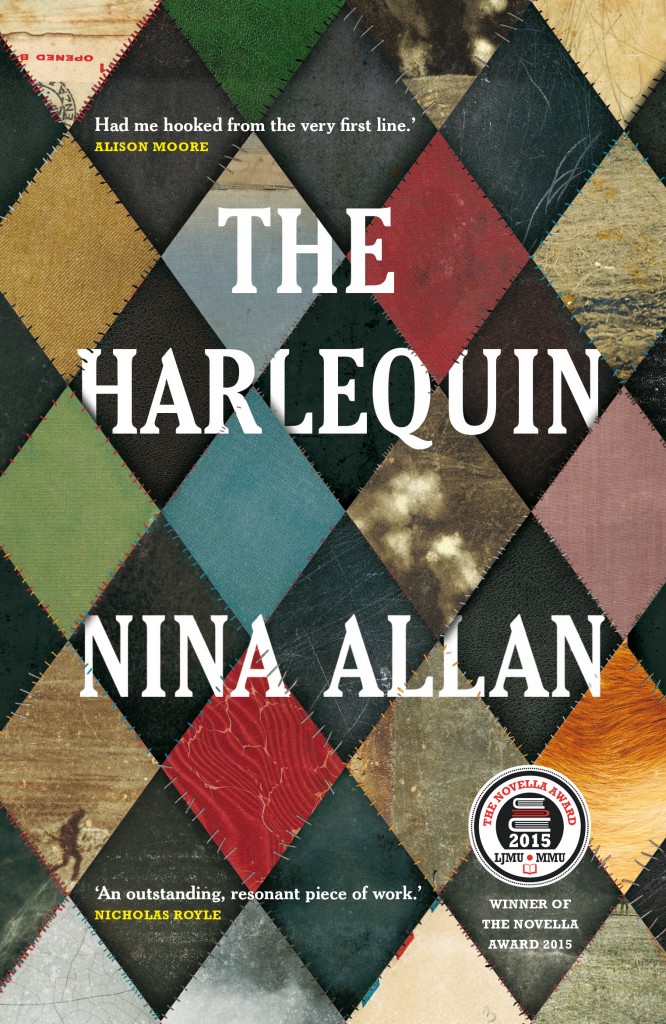 I’m thrilled to announce that my novella The Harlequin has won The Novella Award, the prize competition organised by Manchester Metropolitan and Liverpool John Moores Universities with the specific remit of celebrating and promoting the novella form and which last night celebrated its second birthday. A wonderful evening it was, especially since it offered me an excuse to revisit lovely Liverpool. As a form, the novella is particularly dear to my heart – as evidenced by the fact that I do keep stumbling into writing them – and I would urge any writer who feels the same way to start thinking seriously about entering next year’s competition. This year’s award was judged by Alison Moore and Nicholas Royle, both writers I admire enormously, which makes their kind words on The Harlequin all the more gobsmacking, frankly.
I’m thrilled to announce that my novella The Harlequin has won The Novella Award, the prize competition organised by Manchester Metropolitan and Liverpool John Moores Universities with the specific remit of celebrating and promoting the novella form and which last night celebrated its second birthday. A wonderful evening it was, especially since it offered me an excuse to revisit lovely Liverpool. As a form, the novella is particularly dear to my heart – as evidenced by the fact that I do keep stumbling into writing them – and I would urge any writer who feels the same way to start thinking seriously about entering next year’s competition. This year’s award was judged by Alison Moore and Nicholas Royle, both writers I admire enormously, which makes their kind words on The Harlequin all the more gobsmacking, frankly.